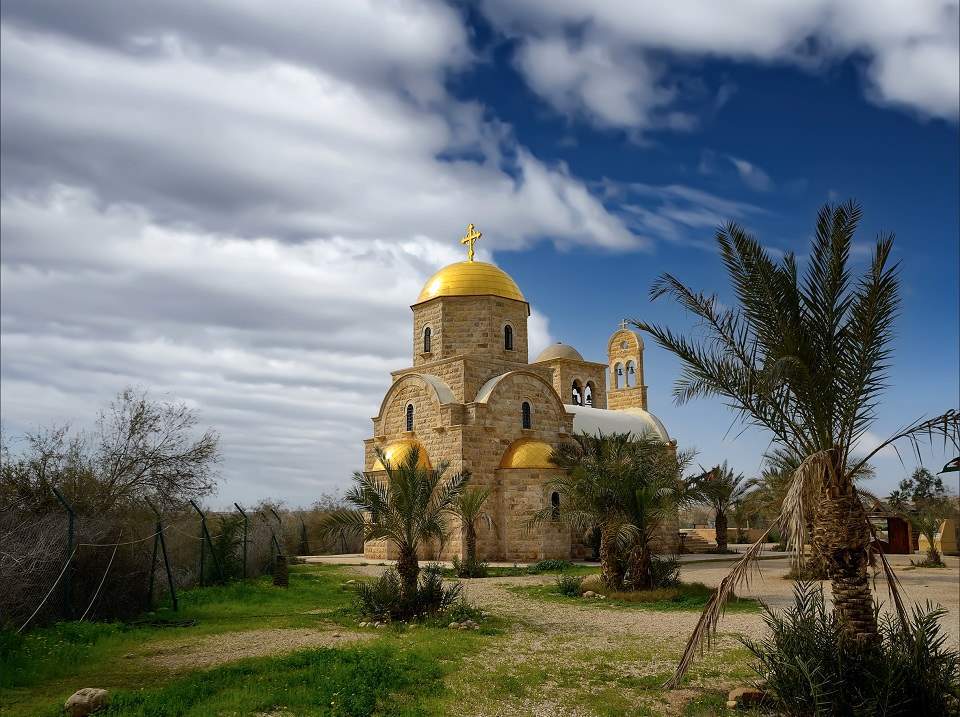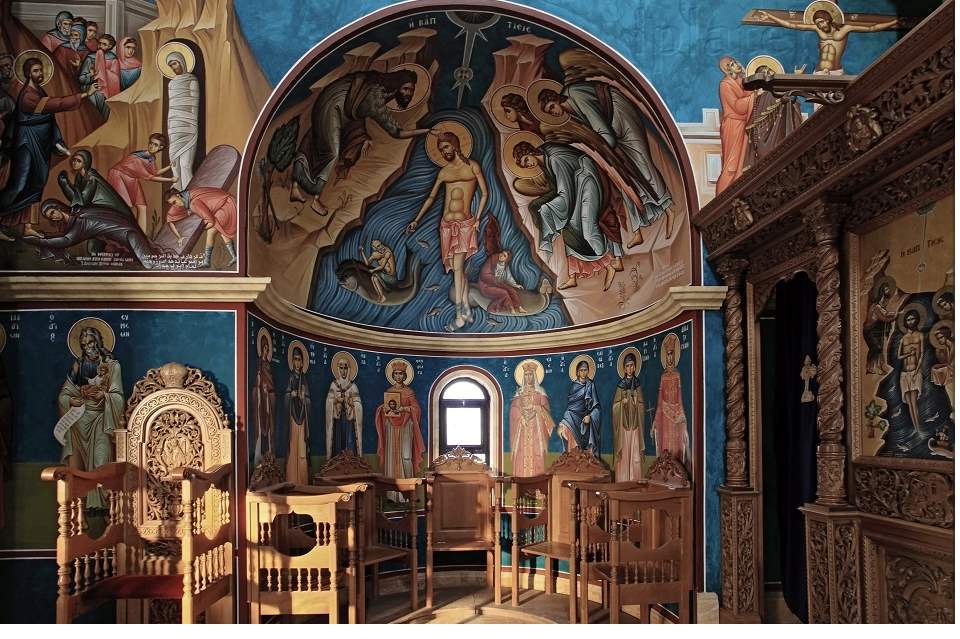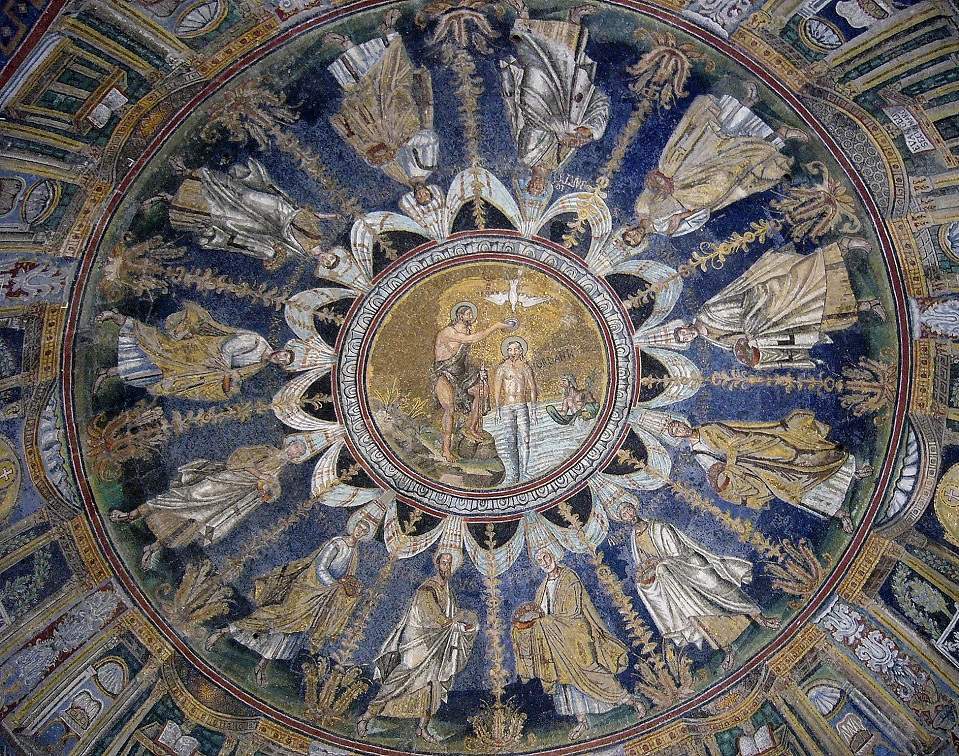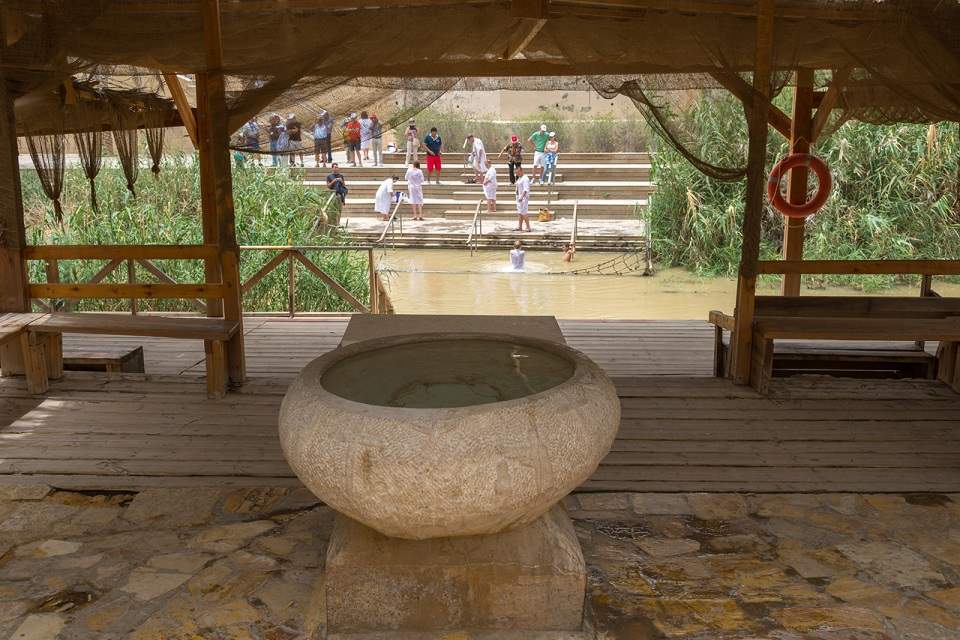AMMAN — Along with the Church of the Holy Sepulture and the Church of Nativity in Jerusalem, the Baptism Site in Jordan is one of the three holiest sites for Christians.
اضافة اعلان
History
Located on the eastern bank of the Jordan River, 8km north of the Dead Sea, the site attracts hundreds of thousands of visitors from all over the world annually, as it is believed to be where Jesus of Nazareth was baptized by John the Baptist. In most Christian denominations, baptism marks the entrance into Christian life.
The site is also one of the five places of pilgrimage in the Kingdom, designated by the Vatican in 2000 after a visit from the late pope, John Paul II.
In 2015, the Baptism Site was made a World Heritage Site by UNESCO under the name Bethany Beyond the Jordan (Al-Maghtas).
The site consists of two main parts: Wadi Al Kharar and Jabal Mar Elias (St Elijah’s Hill).
 Located on the eastern bank of the Jordan River, 8km north of the Dead Sea, the Baptism Site in Jordan is one of Christianity’s most holy region. (Photos: Flickr)
Located on the eastern bank of the Jordan River, 8km north of the Dead Sea, the Baptism Site in Jordan is one of Christianity’s most holy region. (Photos: Flickr)
The renowned mosaic map in Madaba, which dates to the 6th century, depicts Saphsaphas (the Baptism Site) located near the eastern side of the river.
The Book of John also mentions twice that Jesus of Nazareth visited the place where John was baptizing “beyond the river”. The phrase “beyond the river” can mean “east of the river” since Jerusalem was Jesus’ place of residence.
 Located on the eastern bank of the Jordan River, 8km north of the Dead Sea, the Baptism Site in Jordan is one of Christianity’s most holy region. (Photos: Flickr)
Located on the eastern bank of the Jordan River, 8km north of the Dead Sea, the Baptism Site in Jordan is one of Christianity’s most holy region. (Photos: Flickr)
Since it has been a pilgrimage destination for Christians from the across the globe for centuries, several pilgrims of ancient times also referenced the site.
An anonymous pilgrim, known as the pilgrim of Bordeaux, came to the “Holy Land” in 333AD and left an account of his journey, known as Itinerarium Burdigalense. In the account, he stated that Jesus’ baptism site was 8km “north of the Dead Sea”.
The sixth-century pilgrim Theodosius also described the site with its riverside church and structures.
Discovery
The Baptism Site is one of the most important archaeological and biblical discoveries of the 20th century, as archaeologists had been unable to access this mined borderline for decades.
After the Naksa of 1967, the Jordan River became a militarized border, preventing archaeologists from excavating the site until 1994.
HRH Prince Ghazi bin Muhammad, chairman of the Baptism Site Commission, visited the site in 1994 in the company of a Franciscan archaeologist.
 Located on the eastern bank of the Jordan River, 8km north of the Dead Sea, the Baptism Site in Jordan is one of Christianity’s most holy region. (Photos: Flickr)
Located on the eastern bank of the Jordan River, 8km north of the Dead Sea, the Baptism Site in Jordan is one of Christianity’s most holy region. (Photos: Flickr)
Soon, the area was demined, and several archaeological digs led by Mohammad Waheeb, a Jordanian archaeologist, were conducted, leading to the discovery of the Baptism Site in 1997.
In 2002, the Baptism Site opened its doors to visitors with several facilities and services made available, such as shuttle buses and tour guides.
Today, the site is among the Kingdom’s major tourist attractions and is usually visited along with Mount. Nebo and the Dead Sea.
 Located on the eastern bank of the Jordan River, 8km north of the Dead Sea, the Baptism Site in Jordan is one of Christianity’s most holy region. (Photos: Flickr)
Located on the eastern bank of the Jordan River, 8km north of the Dead Sea, the Baptism Site in Jordan is one of Christianity’s most holy region. (Photos: Flickr)
At the site, visitors are allowed to stand by the riverside and touch its waters.
Among the site’s main highlights is the Tell Mar Elias, associated with Prophet Elijah’s ascension to heaven.
Another closer attraction is the 6th century church named after John the Baptist. It is located next to the basin where Jesus was allegedly baptized. The church was lifted on stone arches for protection against flooding.
Read more about Travel




